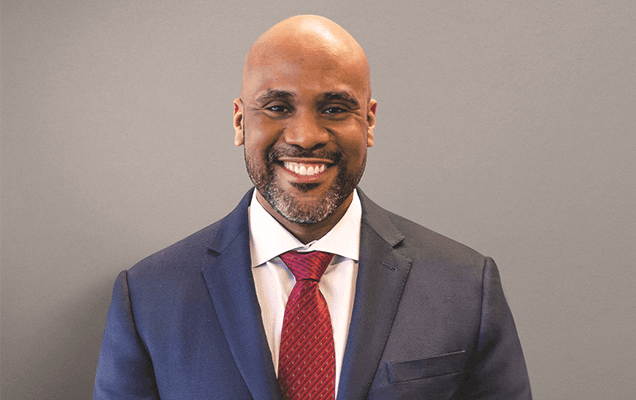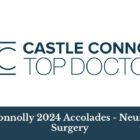A cerebral angiogram can reveal detailed information about the brain’s blood vessels and blood flow. This minimally invasive procedure can provide a more precise picture than typical MRI and CAT scans, and is often used to diagnose conditions such as arteriovenous malformations or fistulas, cerebral aneurysm, vasculitis or stroke, as well as certain kinds of tumors.
To create this highly detailed look at the brain’s vascular system, a cerebral angiogram uses a contrast dye to track blood flow and identify abnormalities in even the smallest blood vessels. In this relatively brief procedure, which typically takes around half an hour, a small incision is made in a major artery, usually the femoral artery in the leg. A catheter is inserted through this incision into the artery and directed toward the affected area of the brain. Once it reaches the site, a dye is injected through the catheter into the blood vessels. As the dye flows through the veins and arteries of the brain, it can be tracked with X-rays.
Because a cerebral angiogram is minimally invasive, recovery time both in the hospital and at home is usually relatively short, with few restrictions on activities. Here’s a look at what you can expect during your cerebral angiogram recovery.
Recovering in the Hospital
Cerebral angiograms are typically performed in hospitals on an outpatient basis so that in most circumstances, patients report to the hospital in the morning and are released later that same day. That stay might be longer, though, depending on individual circumstances and your reaction to the procedure.
In general, the hospital stay for an uncomplicated cerebral angiogram is around four to six hours. After the angiogram is completed, the catheter is withdrawn and the incision in your artery is closed. You will then be moved to a hospital room for observation as you recover from any sedatives that were given and your healthcare team is sure that your incision is secure. You can expect to lie flat with your leg extended straight for four to six hours.
When you are ready to leave the hospital, you’ll be given a set of instructions for caring for your incision and any other things you need to do during your recovery. You may be given prescriptions for additional medications, such as pain relievers. Since you should not drive for at least 24 hours after you’re discharged from the hospital, be sure to arrange for transportation home from the hospital and for other errands while you recover.
Recovering At Home
Without complications, recovery from a cerebral angiogram takes about a week. On the day you return home, you can resume your normal diet and start taking your usual medications as prescribed unless your cerebral doctor recommends otherwise. It’s important to get plenty of rest and drink a lot of liquids, since this will help to flush out the contrast dye from the procedure. You’ll need to avoid strenuous movement, such as climbing stairs and lifting heavy objects on this day. Consider having someone available to help with household tasks or child and pet care during this first stage of your recovery.
We focus on outcomes not treatments.
Let's find the most appropriate solution to your Cerebrovascular condition.The First Two Days At Home
After 24 hours, you can remove the hospital dressing from your incision and take a shower with mild soap, but be careful not to scrub the incision itself. Your care team will either provide you with supplies for dressing and caring for your incision or recommend basic first aid supplies to use. Dry your incision carefully and apply a standard adhesive bandage. Avoid taking a full bath or immersing yourself in swimming pools, whirlpools or spas for the following five days.
For the first two days of your recovery, you’ll need to avoid strenuous physical activity, including gardening, lawn work, sexual activity, heavy housework and exercise. After that, you can begin increasing your activity levels gradually as you feel comfortable doing so – but avoid lifting any weights over 10 pounds for at least five days after the procedure.
During this time, you’ll need to keep your incision site clean and dry. You can expect some bruising and swelling but will need to watch carefully for complications, such as signs of drainage, leg redness or pain or coldness in the limb. If any of those signs appear or if you develop a fever over 100.4 degrees Fahrenheit, call your doctor right away.
If your incision site begins to bleed severely, this is an emergency. Lie down flat and straight and apply pressure on the site. Call 911 or go to the emergency room immediately.
The Second Day and Beyond
Unless you receive different instructions from your doctor, you can expect to return to work or school within one to two days after your procedure. As your recovery continues, you will need to continue caring for the incision and taking any medications your doctor has prescribed to help with your recovery.
After about five days, if no complications occur, you can expect to resume normal activities, including bathing and swimming, unless your doctor recommends otherwise. Your doctor will also schedule follow-up appointments for checking your progress and planning any further treatments that are needed based on the results of your angiogram.
A cerebral angiogram is a generally safe and minimally invasive diagnostic tool that can provide precise details about your condition that other kinds of scans may not reveal. Everyone’s experience is unique, but without complications, the cerebral angiogram recovery time is typically short with a brief hospital stay. Your doctors will work with you to plan a successful recovery for your unique circumstances.

About Dr. Gaetan Moise
Dr. Gaetan Moise is an accomplished neurosurgeon in North Jersey and is a proud member of Neurosurgeons of New Jersey, practicing out of their Ridgewood office conveniently located on East Ridgewood Avenue. His compassionate evidence-based, results-driven approach is guided by his desire to help patients achieve happy, pain-free lives through non-surgical and appropriate surgical solutions. Dr. Moise’s techniques are influenced by the advancements in minimally invasive surgery technology as well as advances in the understanding of the intricacies of the nervous system, brain, and spinal cord. Dr. Moise is a member of The Congress of Neurological Surgeons and the American Association of Neurological Surgeons. He is accepting new patients.






